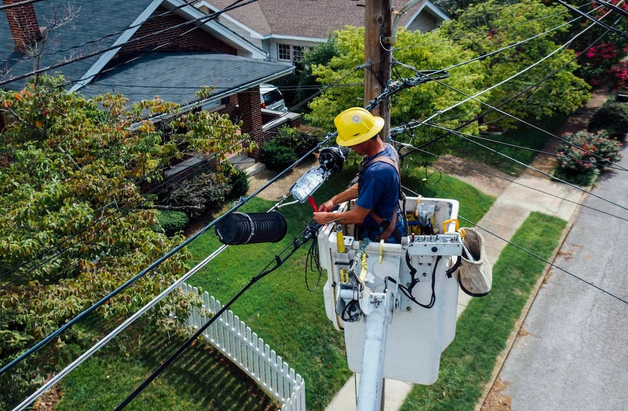Everything You Need to Know About Electrician Invoices

June 23, 2023
Electrical work is no easy feat; hence, these professionals need an electrician invoice to secure compensation for all their services.
The duties and responsibilities of an electrician include assembling and installing indoor and outdoor electrical wiring, repairing electrical fixtures, and designing, diagnosing, and testing a structure’s electrical system.
Electricians take on one of the riskiest and most complex manual jobs that demands proper training and compensation.
This article will guide you in preparing invoices for every project you take on to keep your business well-oiled, well-protected, and highly trusted by your existing clients.
What is an Electrician Invoice?

An electrician invoice is a time-sensitive commercial document that electricians issue to record all transactions and undertakings completed for each client. Invoices underscore the trustworthiness and legitimacy of your services as an electrician.
Your professional invoice contains the entire denomination of all your services. Invoicing your work also entails itemizing all equipment used to perform your job or preparing separate invoices if you work with subcontractors to complete a client request.
Why is an Electrician Invoice Important?
An electrician’s work is complex, risky, and integral to the continuous operation of industrial infrastructure and commercial establishments. Electricians also contribute significantly to maintaining consumer safety by fixing technical issues that disrupt the power supply in residential areas.
As such, it is only fitting for individuals and companies specializing in electrical services to create an electrician invoice and secure proper payment for their service and expertise. Unfortunately, most electricians are used to providing estimates for their services based on what the client has requested.
The challenge with not invoicing for your electrical services is that it might be difficult to provide standard rates as you gain more customers. Creating an invoice as an electrician also serves as your guide when you file your taxes later on.
Your invoices serve as a complete and consistent record of your annual income. In turn, the IRS uses them to determine how much tax you owe. Furthermore, the capacity to issue invoices signals professionalism and trustworthiness.
What to Include in Your Electrician Invoice

The key to creating a professional and reliable electrician invoice is to ensure it contains complete, accurate, and easily understandable information. Be sure to take a look at our invoice checklist to ensure you’ve covered all the necessary details before sending your invoice.
The following are the key elements that must be present in your invoice:
#1. Contact Information Header
The contact information header bears your name and contact details as the service provider. You can also replace your name with your company's name if you run a business specializing in electrical services. Better yet, add a logo at the top right corner of your invoice so your customers can quickly identify you as the sender of the invoice.
See to it that your contact number, address, and email address are updated. Your name must also be visible and legible on your invoice. Otherwise, your customer might end up questioning the document’s validity.
#2. Invoice Number and Dates
The date on your electrician invoice is the year, month, and day the invoice was issued. Meanwhile, invoice numbers are distinct for each invoice. These are a combination of sequential numbers unique to each client or transaction used for documentation and filing purposes.
There are different ways to arrange an invoice number:
- Sequential invoice numbering adapts a numerical arrangement that starts with the number 1.
- Chronological invoice numbering contains the invoice number and the date the invoice was issued.
- Customer invoice numbering includes a unique number for each customer, followed by the invoice generation date and the sequence or order in which the invoice was created.
#3. Work Breakdown
List all the services you have provided under the work breakdown section. Depending on the job's complexity, the breakdown may include the materials used to complete the task.
A client may request a simple repair at first, but you discover that the structural wiring requires more intricate troubleshooting. Hence, you may need to use more equipment than was originally necessary.
At the same time, more highly technical electrician jobs will likely entail working closely with subcontractors, and you need to indicate that in your invoice to ensure appropriate accounting for all additional tools and services provided.
#4. Payment Methods
The payment methods section specifies all the different types of payments accepted by your business. They can be cash, bank transfers, checks, credit or debit cards, or online payments.
Discuss your preferred payment methods with your clients and see if you agree on any of the options available. Specifying your preferred payment channels ensures your client can send the amount indicated in your invoice and fulfill their payment obligations on time.
#5. Additional details
This section in your electrician invoice is reserved for when you have any additional and essential information about the transaction that is not covered elsewhere. An example of this is when you employ the assistance of other electricians or contractors while performing the job.
Alternatively, you can add a short and simple ‘Thank You’ note to send to your clients for choosing to do business with you.
How to Make an Electrician Invoice
Using a paystub generator is an excellent way to create electrician invoices consistently and continuously. It is simple and easy to use, as shown by the following steps:
- Open the invoice generator.
- Choose an electrician invoice template and fill in the blank fields with the necessary information.
- Preview your invoice before finalizing the details and download it.
With an invoice generator, creating several invoices in one go is possible. It reduces the time it takes for you to invoice every single client. Come tax season, filing your taxes is easier because you can save digital copies of all your invoices for effortless organization and referencing later on.
Invoice generators also ensure your documents are error-free and 100% reliable.
Different Types of Invoices
Aside from the electrician invoice, other examples of invoices used by professionals include:
Invoice Type | Definition |
|---|---|
It is a type of invoice used by actors to list their services, corresponding rates, and payment terms. | |
An invoice issued by a seller to a customer before the latter receives the goods or services they ordered. | |
Commercial invoices are used to request or solicit payment for services and goods sold internationally. | |
It is an invoice issued by consultants and consulting services to secure payments for their expertise. | |
Construction invoices are documents issued by construction firms to their clients to collect payments for every completed project. | |
It is an invoice created when a customer requests a refund for the goods or services they purchased. | |
Independent contractors typically create a deposit invoice to secure a deposit or payment from their clients before commencing or completing a task. | |
A digital invoice is an invoice that is in electronic format and is sent to clients via email. | |
Freelancers also generate invoices to ensure they receive proper compensation for their services. | |
It is issued by graphic designers to their clients to secure payment in exchange for providing their expertise for a project or client. | |
A type of invoice created specifically to enumerate all the services rendered by a photographer for a client. | |
Purchase invoices are created alongside purchase orders and are sent by a seller to indicate the amount that a buyer owes the business. | |
A recurring invoice is issued weekly or monthly, depending on how frequently a customer repeatedly orders the same services or goods. | |
A sales invoice is the standard or default type of invoice that businesses create for every transaction or sale. | |
Service-based businesses such as financial advising, housekeeping, and tutoring use service-rendered invoices to enumerate all the services provided for a client and request the necessary payments. | |
A shipping invoice, or “bill of lading,” is a legal document that specifies the items and provisions contained in a shipment. | |
Small business owners create and issue invoices for every product or service a customer purchases. | |
A sundry or miscellaneous invoice is typically used for subscriptions, commissions, additional earnings, and interest payments. | |
This financial document summarizes all the writing services provided for a client or project, plus the expected payment in exchange. |
Final Thoughts
An electrician's work is in demand but also hazardous, so it would be wrong to put your safety on the line while performing your job only to end up empty-handed.
Creating invoices is a quintessential element in any type of business or transaction, including providing electrical services to residential and commercial structures. Aside from representing a business as legitimate, invoices guarantee that customers pay the required amount for the services or goods purchased.
In the long run, your electrician invoice allows you to establish a sense of reliability and professionalism that customers will associate with your services.
Key Takeaways
- An electrician invoice is an itemized commercial document listing all services and tools provided and used by the electrician to fulfill a project or client request.
- Invoices ensure electricians receive the correct amount due for their services, effectively gain customer trust, and enable easy record-keeping for accounting and tax purposes.
- Electrician invoices typically contain a contact information header, an invoice number, the date when the invoice was issued, a work breakdown, and preferred payment methods.
- The most convenient and practical way to prepare an electrician invoice is to use an invoice generator because it is user-friendly, timely, and practical.


